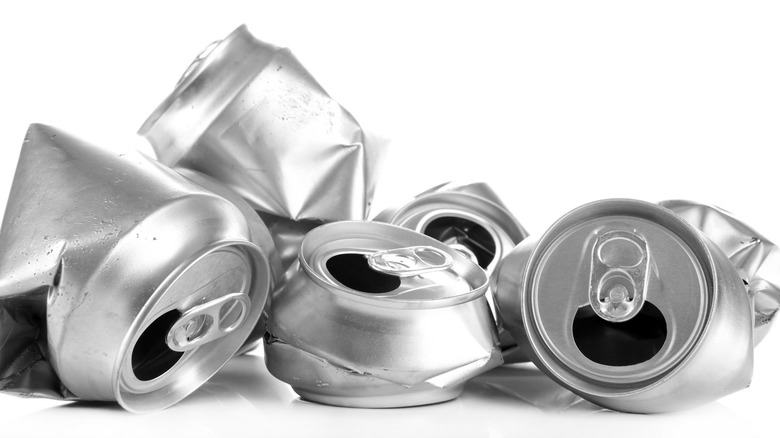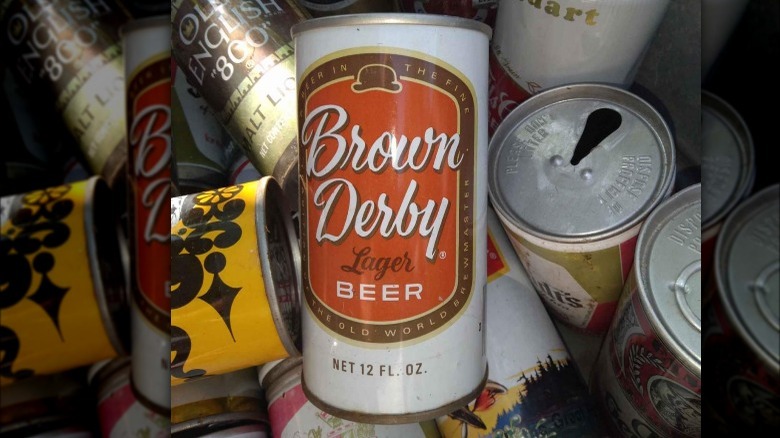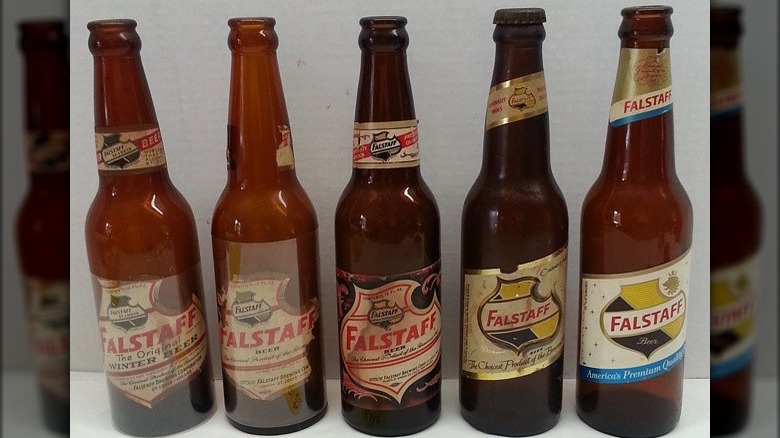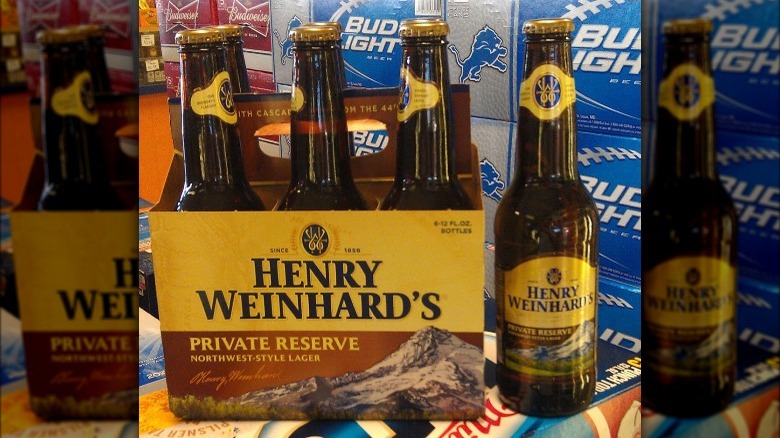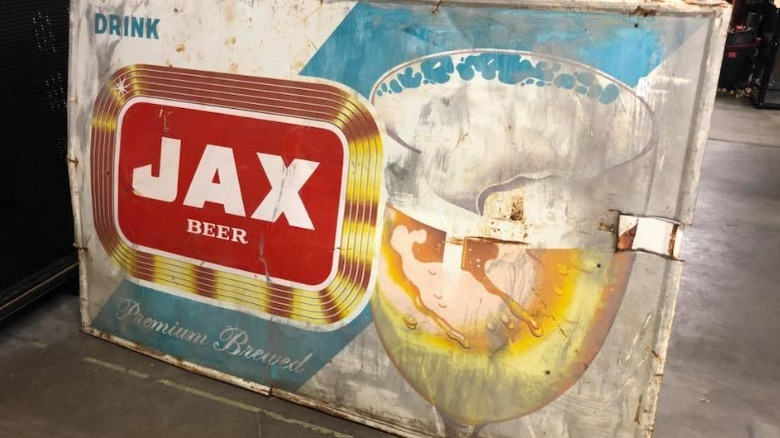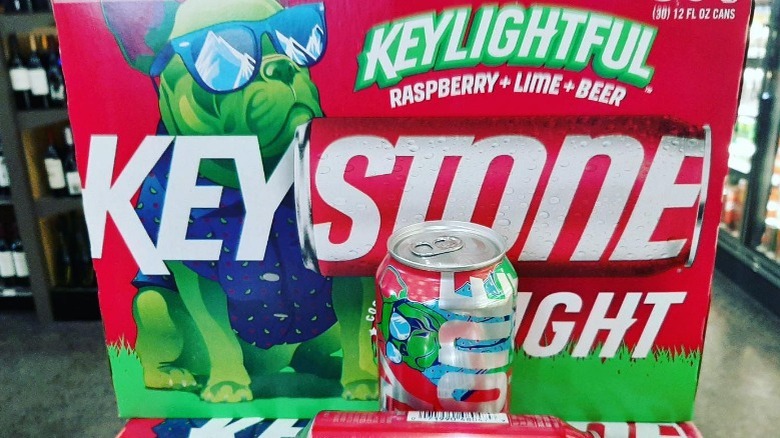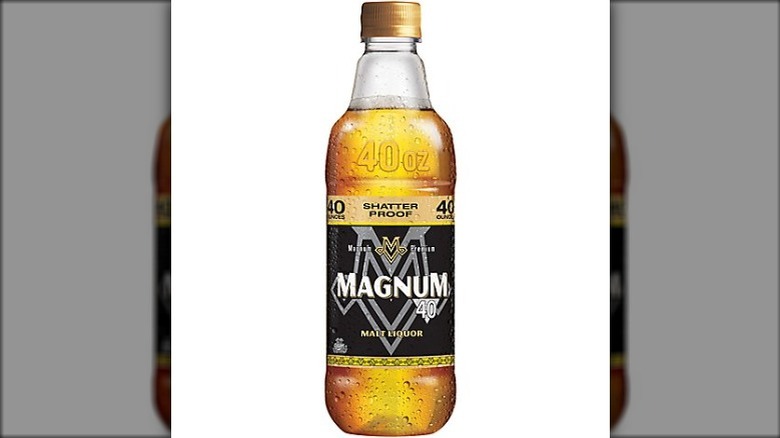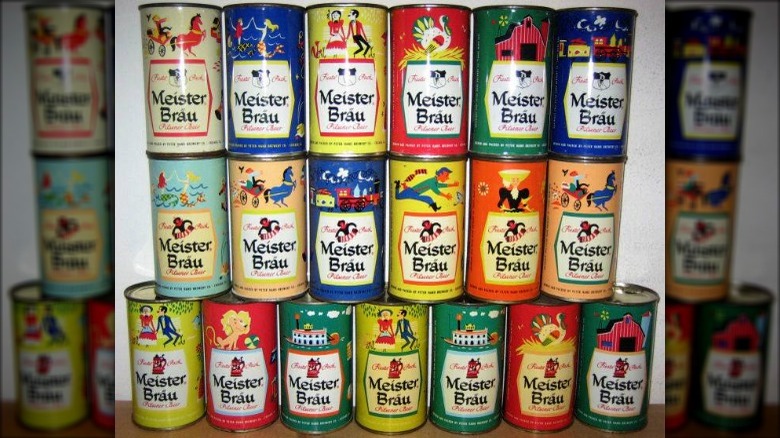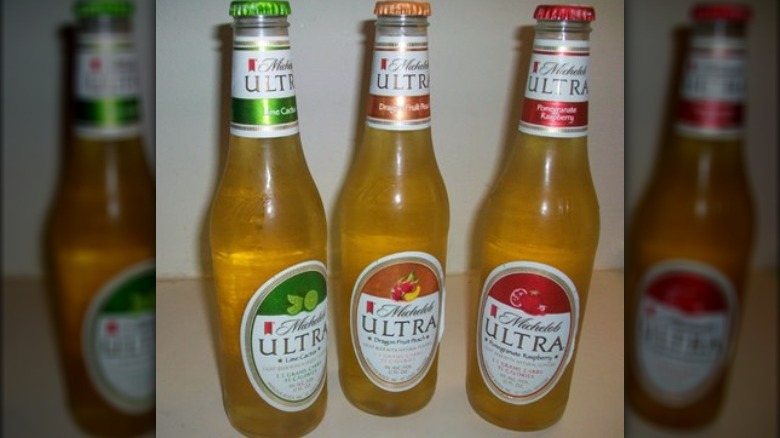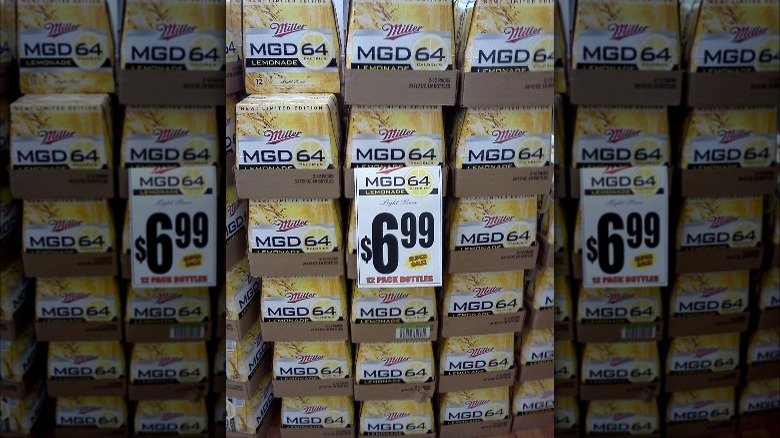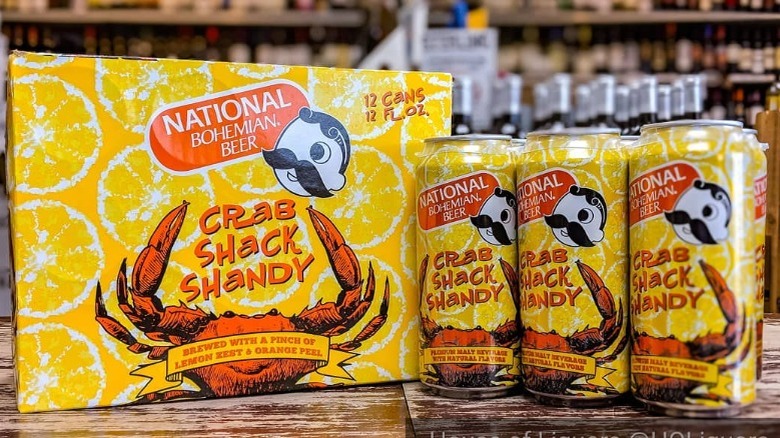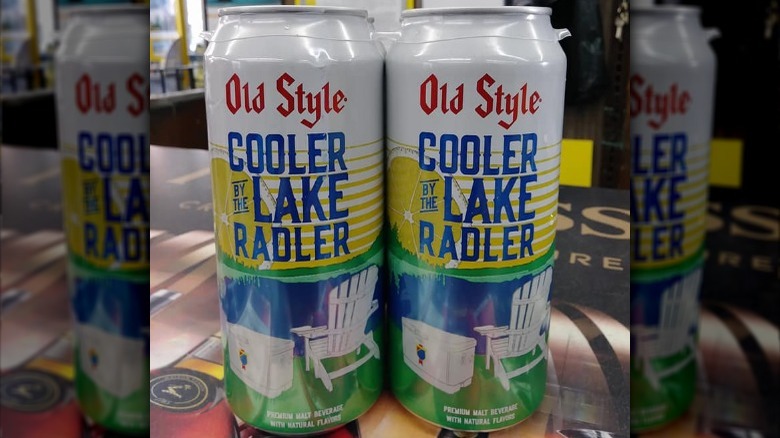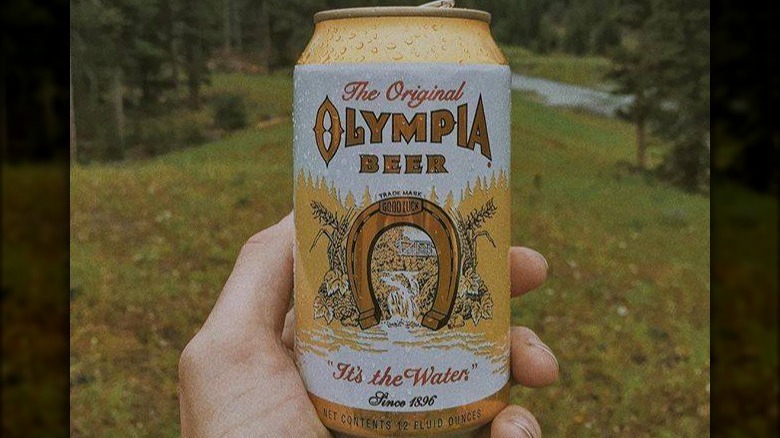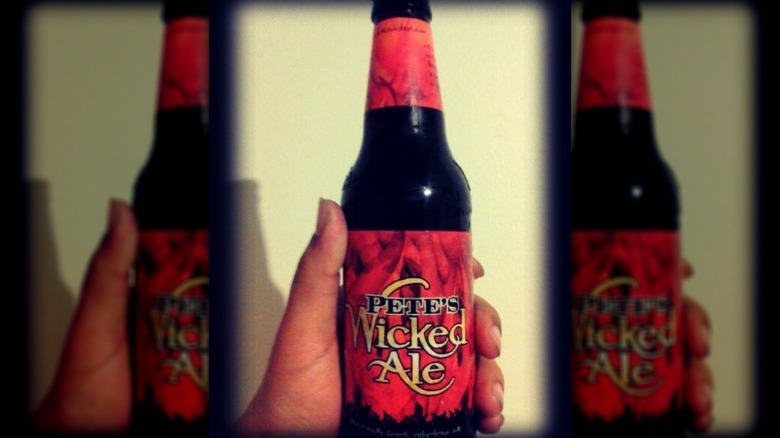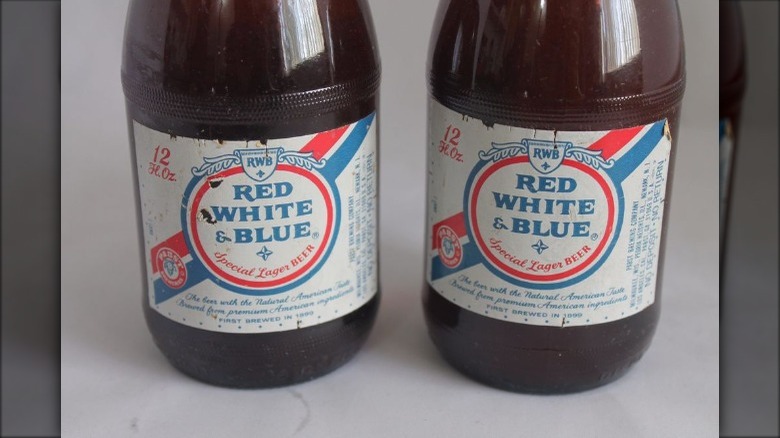13 Discontinued Beers You'll Never Drink Again
Beers come and beers go, which is pretty much the case with just about any food or beverage product. What's odd is that there often seems to be no rhyme or reason behind it all, besides the mysterious market forces that determine their fate. Some beloved brews go away forever, while others far less lovable endure year after year. There's really nothing we can do apart from raising a glass (of something else) to toast these bygone beers.
We couldn't possibly cover every beer that's ceased to exist since the beginning of time, so we had to be selective. For starters, even though Molson/Coors recently discontinued 11 beers, we only included a few of them on this list. Why? Most of the beers that went away were D-listers you'd never see in the stores, so it's not likely they'll be missed all that much. (Did you even know Milwaukee's Best offered a Premium version? We didn't, either.) The beers here were once either regional or national favorites or else were beers with something fairly unique to offer. Still, chances are all but certain you'll never drink them again.
Brown Derby
Where do you typically buy most of your beer? Where do you typically buy most of your beer? If you tend to pick up a six-pack when you're at the grocery store, you're in good company — as of 2020, Grocery Dive reports that grocery sales account for nearly 44% of all booze sold in the U.S. While grocery stores may offer a wide selection of domestics, imports, and craft brews, for the most part they haven't really gotten into producing their own store-brand beers. A long time ago, though, there was Brown Derby, made exclusively for Safeway.
Brown Derby beer dates back to 1933, when Prohibition was repealed. It was made by a California brewery that adopted a name and logo meant to associate its brew with the famous Brown Derby restaurants. The restaurant chain wasn't too thrilled about this honor, though, so the brewery had to change the packaging. However, it was allowed to retain the name.
The beer itself bounced from brewery to brewery, but remained a Safeway staple until 1988. At this time, many Safeway stores were sold to rival grocery chain Vons. The new owners weren't down with having their own generic beer brand. Rusty Cans notes that Brown Derby continued to be sold in some West Coast Safeway stores, but the brand seems to have disappeared altogether sometime during the past three decades.
Falstaff
There was once a time when Falstaff was the other big St. Louis brew, behind only Budweiser. While Falstaff had no Clydesdales to its name, it had something equally monumental: according to the Whiting-Robertsdale Historical Society, it was known for its storage silos painted to look like giant beer cans. Standing on the border between Indiana and Illinois, these massive cans belonged to one of its malting plants and were built in the early 1900s, although they didn't acquire the snazzy paint job until later in the century. The beer itself, though, dates all the way back to 1840.
By 1960, Falstaff was the nation's number three brand. Up through the '70s, it sponsored St. Louis Cardinals broadcasts, with the legendary sportscaster Harry Caray as pitchman. At the turn of the millennium, though, Falstaff was on its way out. Production ceased altogether in 2005.
What brought this beer behemoth so low? In 1975, the brand was sold to the company that owned Pabst and Stroh's, and by 1990 it was being produced solely by Pabst. 15 years later, Falstaff was dropped and St. Louis became a one-macrobrewery town. Even the beer can silos no longer mark the Midwestern skyline, as they were demolished in 1997. Harry Caray himself died the following year, but we like to think of him kicking back and enjoying his afterlife with "an ice cold Falstaff" in hand.
Henry Weinhard's Private Reserve
Portland, Oregon may be best known as the hipster capital of the world thanks to "Portlandia," a TV series that was meant as a satire but often hit quite close to the mark. While we now picture Portland as the kind of place that has at least three craft breweries per block, there was one beer that got the ball rolling nearly 50 years ago: Henry Weinhard's Private Reserve (via Oregon Live). Weinhard Brewing itself dates back to the 1850s, but the beer that made founder Henry Weinhard a household name was first brewed as a tribute to him in 1975.
Henry's was a huge hit, seen by many Portlanders as something that paved the way for the craft beer revolution that came along a few decades later. Still, as Robert Frost once put it, "Nothing gold can stay." (Okay, so he was talking about foliage, and, in a metaphorical sense, life, love, and happiness, but it applies to beer as well.) As per Oregon Live, the Weinhard brewery was sold to Pabst in 1979, entually ending up in the hands of Molson-Coors. Henry Weinhard's Private Reserve is among the handful of brands that the company just dropped. Unlike some of the other ones on that list, though, Henry's will definitely be missed.
Jax
If you're a craft aficionado, you may go for a growler, while if you're a big partier you may favor a case or keg. If you're a moderate beer drinker, though, there's a good chance you purchase your beers by the If you're a craft aficionado, you may go for a growler, while if you're a big partier you may favor a case or keg. If you're a moderate beer drinker, though, there's a good chance you purchase your beers by the six-pack. You may have Jax to thank for that, according to the Florida Times-Union. This beer, once one of the South's favorites, claims to have been the first beer to come up with this concept in the '40s.
Well, whether or not Jax invented the six-pack, it did have a pretty good run. The beer was brewed in Jacksonville, Florida from 1913 to 1956 (except during Prohibition, of course), but later moved to New Orleans where it merged with another Jax beer brewed by the Jackson Brewing Company. In the '70s, though, the beer was bought by Texas' Pearl Brewery. While The Jacksonville Historical Society claims that Jax is still being brewed in Texas, the info is a bit out of date as Pearl themselves were bought out by Pabst around the turn of the millennium. While its flagship Pearl beer eventually returned to the market on a local level, as per Texas Public Radio, Jax remains missing in action and presumed dead.
Certain Keystone Light spinoffs
Keystone Light fans, don't panic! America's least bitter beer, as its vintage '90s commercials would have you believe, is still very much with us. Haters can hate, but it's good to have beers at the cheaper, lighter end of the market. Not everyone wants a thousand-IBU IPA, okay? Yet some Keystone Light spinoffs, especially those of the fruit-flavored variety, have proven to have less staying power than the original.
Back in the mid-20-teens, Keystone Light marketed a lime version, which, according to Beer Advocate, is now retired. In 2020, it tried one more time, upping the ante with raspberry. Keylightful, despite (or perhaps because of) its punny name, somehow failed to catch on. Even its mascot, a Frenchie called Lil' Breezy Keezy, couldn't keep it on the market for more than a couple of years. After the recent Molson-Coors streamlining. Keylightful was dropped from the roster. Joining it in limbo is Keystone Ice, a product that never made much sense anyway, since who spins off a heavy beer from a light one?
Magnum
What, exactly, is malt liquor? Basically, it's a kind of overproof beer, with a higher-than-standard ABV, although it's not always higher than that of some craft brews, ice beers, or your basic Bud Light Rita. Essentially, a malt liquor is a high(ish) octane macrobrew that chooses to label itself as such, which is something not many beers do these days. While malt liquor in midcentury America may have been marketed as an upscale product, by the time the century drew to a close it was touted more for its "get drunker, cheaper" properties. Malt liquor may have plenty of competition these days when it comes to getting your quick drunk on, but it's still around in one form or other (usually of the 40-ounce variety).
One brand you won't be seeing on store shelves anymore, though, is Magnum, a malt liquor produced by Miller. As Miller also produces "The Champagne of Beers," we're going to assume the name was meant to echo a type of champagne bottle rather than a style of ammunition. Magnum is, or was, a malt liquor much like any other, although at 5.6% ABV it fell somewhere on the lower end of the booziness scale. Despite earning such accolades from Beer Advocate users as "not too bad," and "a solid, non-offensive malt liquor," Magnum, too, was recently dropped by Molson-Coors.
Meister Brau
If you've ever caught a game in the friendly confines of Wrigley Field, then you know there's no more quintessential Cubs fan experience than sucking down an Old Style while munching on a hot dog (Chicago-style, natch). Well, what you may not be aware — don't feel bad here, as few know — is that Old Style isn't really a Chicago beer at all, according to The New Chicagoan. In fact, it's actually from Wisconsin, which is, admittedly, a better-known beer state than is Illinois. Yet there once was an Illinois beer that had a far better claim to the title of true Chicago brew: the now-defunct Meister Brau.
Meister Brau was Chicago-born and brewed from 1891 through the early '70s. At one point, it sponsored many of Chicago's sports teams. It was the official beer of the White Sox as well as the Blackhawks and "da Bears."
The thing about Meister Brau, though, is that it never really caught on outside the Chicago area. The beer was eventually purchased by Miller, but the Milwaukee brewer declined to keep the name. (Milwaukee, after all, has long held a bit of a grudge towards the larger city to the south.) Instead, it did some tweaking of the recipe and eventually re-branded the beer as Miller Lite. While it has, in fact, returned as the official beer of the White Sox, as per Eater, we have to admit that Guaranteed Rate Field is no Comiskey Park and Miller Lite's no Meister Brau. Sic transit gloria mundi.
Michelob Ultra Fruit-Infused
Once upon a turn of the century — that century being the 21st – wine coolers were well past their heyday, while hard seltzer had yet to get its Claws into the market. Into this breach stepped Michelob with its extra-light Ultra, available not only in basic beer flavor but also in fruit-infused Lime Cactus, Pomegranate Raspberry, and Tuscan Orange Grapefruit. These first three infusions came out in 2007 and in 2010 were joined by Dragonfruit Peach.
Marketing being what it is, companies tend to make a pretty big deal out of introducing new products, but they don't exactly rush out the press releases when they quietly drop something from the lineup. While we don't know exactly when (or why) changes were made, we do know that Tuscan Orange Grapefruit and Dragonfruit Peach are gone, gone, gone. Lime Cactus, now known as Lime & Prickly Pear Cactus, is still very much in existence, though it now comes in cans. Pomegranate, however, dropped the raspberry in favor of agave. This revamped flavor combo doesn't even merit a mention on Michelob's website, but it is bundled into variety packs alongside the Lime & Prickly Pear Cactus and a non-flavored, non-infused Ultra called Pure Gold.
Miller Genuine Draft 64 Lemonade
Back in the early 2000s, low-carb beers were all the rage, but the problem with many of them is that they tasted rather flat. Not flat as in lack of fizz, necessarily, but just, you know, kind of blah. Whatever brewers had done to de-carb the beers removed much of the flavor as well. Miller tried to combat this by introducing a lemonade-flavored MGD 64 spinoff. Sadly, it was very short lived.
Miller Genuine Draft 64 Lemonade was introduced to the market in the summer of 2011, but by late July it was dead in the water, a substance that some drinkers not-so-coincidentally compared it to (via Beer Advocate).
While the product was intended to be a low-carb, light spin on Leinenkugel's popular Summer Shandy (also a Miller brand at the time), it just never really took off. At first Miller planned to tweak the formula of MGD 64 Lemonade, but it wound up just dumping the product entirely. In fact, so eager was it to have the beer off its hands that the Milwaukee Business Journal reports that Miller bought up all the product still in the warehouses and, er, made away with it somehow. While Miller did not disclose what it did with the unwanted beer, it wouldn't have been the worst thing to find its way to the bottom of Lake Michigan if, in fact, this turns out to have been its fate.
National Bohemian Crab Shack Shandy
Yet another lemon-flavored beer that failed to survive too many seasons was National Bohemian Crab Shack Shandy. Despite what its name may imply, the beer wasn't actually flavored with Old Bay seasoning. That's too bad, as that might have gone over big with Natty Boh's core constituents in Charm City. It is, after all, widely considered to be Baltimore's beer, now and forever.
Instead, Crab Shack Shandy adopted the more typical shandy flavor profile, with plenty of citrus flavor to go along with its more classic malty beer taste, as per the brewer (via WTOP). While the description makes it sound delightful, Beer Advocate users unflatteringly compared Crab Shack Shandy to Country Time Lemonade. A few of them, in fact, were disappointed by its lack of crab or Old Bay flavoring, and most found it to be a pretty so-so shandy.
While we're not really sure what killed off this Natty Boh seasonal, we suspect timing may have had something to do with it. It was introduced in spring of 2018 and brought back again for the summer of 2019, but by the following year ... well, you know. What with COVID-19, product shortages, runaway inflation, and all the other myriad ills plaguing the 2020s to date, it seems that Crab Shack Shandy may have been one more casualty of our post-pandemic world.
Old Style Cooler by the Lake
2018 must have been a good year for shandy-style beers, as not only Natty Boh but Old Style added one of these summer stalwarts to its lineup, as per the Chicago Tribune. Old Style, the Chicago beer that's actually made in Wisconsin (via The Old Chicagoan), didn't call its Cooler by the Lake a shandy, though. Instead, the brewery opted to describe it as a radler. Potato, potahto ... As per VinePair, a shandy is a 50/50 mix of beer and lemonade, while a radler can use any type of juice.
That said, Cooler by the Lake was pretty lemonade-y. One Beer Advocate reviewer (in fact, the only Beer Advocate reviewer of this particular brew as of 2022) did detect notes of orange and grapefruit, however. So, perhaps CBTL was technically a radler, after all.
So what happened to Cooler by the Lake? Well, it's possible that it may have fallen victim to market oversaturation. After all, it was only available in the Midwest, territory already staked out by the very similar-tasting Leinenkugel's Summer Shandy. As CBTL, too, seems to have lasted for just those last two pre-pandemic summers, it's likely that Old Style's radler met a similar COVID-blighted fate to that of Natty Boh's shandy.
Olympia Beer
Seattle these days is best known as the birthplace of grunge, Microsoft, Starbucks, and Amazon, the latter three being pillars of life as we know it in the early 21st century. The first is still arguably around in a revamped form, as the 2020s are pretty much the 1990s 2.0, though with a little bonus DLC. Long before Seattle became an artisanal everything, single-origin coffee, and craft beer kind of town, though, it was a regular blue-collar kind of place where people fished, worked the docks, and relaxed with six-packs of Olympia beer.
While Oly wasn't actually brewed in the Emerald City, it was a product of nearby Tumwater, Washington, about an hour's drive south. According to SeattlePi, the beer was first brewed in the 1890s by a German beermaker. Perhaps Milwaukee had hit its quota by then, and Mr. Schmidt was in the vanguard of brewing's westward expansion.
At any rate, his brewery prospered for over 100 years, but shortly after the turn of the millennium was bought out by, yet again, Pabst. From that point on Olympia was brewed in California. "Was" is the operative word here, as that production is definitely past tense as of the time of writing. According to a 2021 Instagram announcement (apparently this is today's equivalent of taking out a full-page ad in the newspaper), the company is putting a halt to the production of its beer to concentrate on a more profitable vodka distilling operation instead.
Pete's Wicked Ale
Pete's Wicked Ale is one of those "oh yeah" beers. If you were old enough to drink the stuff back in its heyday, you're probably just now thinking those very words, followed by the thought that you haven't seen it in forever. The fact that it's included on this list negates the need for a follow-up question your brain would otherwise be tempted to pose, that being "Do they even still make that stuff?" What you may be surprised to learn, however, is that it stuck around a fairly long time, since it didn't actually leave store shelves until 2011, as per The Day.
Pete's Wicked is pretty much a Gen X beer, having come of age in 1986. Interestingly enough, it was the creation of a home brewer who was actually more of a wine guy until he tried brewing his own beer. While Pete's Wicked wasn't the first craft beer ever, it was one of the earliest and certainly one of the most popular back in its day.
In fact, at one time, Pete's it was the nation's second most popular microbrew, with Sam Adams taking the top spot. In the late '90s, the brand was sold to the Gambrinus Company. In 2000, the new owners tinkered with the formula. It's this change that led the original Pete to consider the brand officially "dead", according to The Day. Despite the original brewer's disapproval, it took another decade before Gambrinus bailed on Pete's Wicked altogether.
Red White & Blue
Once upon a time in the Midwest, there was no better beer for an Independence Day picnic than the patriotically-named Red White & Blue. It was the kind of light and easy-drinking lager that would play nicely with fried chicken and potato salad, and it was also budget-priced so it wouldn't set you back too much even if you purchased a case or two. Appropriately enough, Red White & Blue was even born on the Fourth of July. Specifically, it debuted on July 4, 1899 (via Milwaukee Journal Sentinel).
What we don't know about Red White & Blue is the exact date it died — at least, not the first time around. It went away at some point, though it must have lasted into the 1990s as it was the brew of choice for the naked beer slides that took place at a Milwaukee bar patronized primarily by Marquette students (something that may not be the pride of the Jesuit university). While Red White & Blue was reborn in 2018 as a draft beer served by the Pabst Milwaukee Brewery and Taproom, as per the Milwaukee Journal Sentinel, this brief revival came to an end when the tavern itself (renamed the Captain Pabst Pilot House) closed at the end of 2020.
